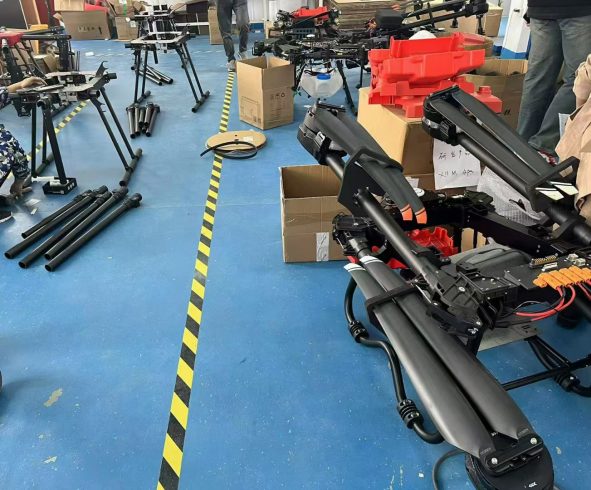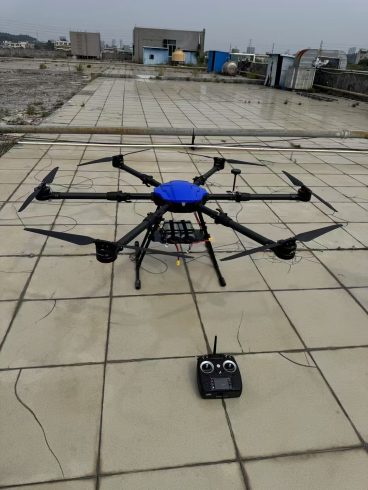![图片[1]-Drone Spraying Software Overview: The Brains Behind Precision Agriculture-msoen](https://www.msoen.com/wp-content/uploads/2025/04/164e113f97214114-576x1024.jpg)
As drone spraying becomes a cornerstone of modern farming, the software powering these aerial systems has emerged as the unsung hero. Far more than just flight controllers, advanced drone spraying platforms integrate AI, geospatial analytics, and real-time decision-making to optimize every droplet applied. This article explores the critical software components transforming agricultural drones into intelligent, data-driven crop management tools.
The Role of Software in Drone Spraying
Drone spraying software acts as the central nervous system, coordinating hardware, environmental data, and farm objectives. Key responsibilities include:
- Flight Planning: Mapping efficient routes for maximum coverage.
- Chemical Management: Calculating optimal spray rates and droplet sizes.
- Compliance: Ensuring adherence to local aviation and agrochemical regulations.
- Data Integration: Synthesizing soil, weather, and crop health data for adaptive spraying.
Core Features of Modern Drone Spraying Software
- Intelligent Mission Planning
- 3D Field Mapping: Uses LiDAR or photogrammetry to create centimeter-accurate elevation models, critical for sloped or terraced fields.
- Obstacle Avoidance Routing: Automatically adjusts flight paths around trees, poles, and power lines.
- Variable-Rate Zoning: Divides fields into zones based on soil moisture, NDVI (crop health), or pest pressure for customized treatment.
- Real-Time Adaptive Spraying
- Sensor-Driven Adjustments: Modifies spray volume mid-flight using data from:
- Multispectral cameras (plant stress detection).
- Ultrasonic wind sensors (drift prevention).
- Humidity/temperature gauges (evaporation control).
- AI-Powered Nozzle Control: Adjusts droplet size from 50–500 microns based on canopy density and wind speed.
- Fleet & Chemical Management
- Drone Swarm Coordination: Synchronizes multiple drones via cloud platforms for large-scale operations.
- Tank Mix Calculator: Recommends chemical/water ratios to avoid phytotoxicity and ensure compatibility.
- Spray Logs: Generates audit-ready reports with timestamps, GPS coordinates, and chemical usage per zone.
- Compliance & Safety Tools
- No-Fly Zone Alerts: Integrates with national aviation databases to avoid restricted airspace.
- Buffer Zone Automation: Automatically pauses spraying near waterways, organic fields, or residential areas.
- Weather Integration: Halts missions if rain or high winds are forecasted within 30 minutes.
Key Technologies Powering Spraying Software
A. AI & Machine Learning
- Trains on historical data to predict pest outbreaks or nutrient deficiencies.
- Enables automatic crop disease identification via onboard camera feeds. B. Cloud Computing
- Processes terabytes of field data for long-term analytics.
- Facilitates remote mission updates and team collaboration. C. IoT Integration
- Syncs with soil probes, weather stations, and irrigation systems for holistic decision-making.
- Enables real-time adjustments based on live moisture or nutrient data. D. Blockchain
- Immutably records spray operations for organic/regulatory certification.
- Provides consumers with farm-to-table spray history transparency.
Benefits of Advanced Spraying Software
- Precision: Reduces chemical overuse by 20–40% through targeted application.
- Regulatory Compliance: Automates record-keeping for audits and certifications.
- Cost Savings: Optimizes battery/chemical usage, lowering operational expenses.
- Scalability: Manages fleets across thousands of acres with minimal human input.
- Sustainability: Minimizes environmental impact via drift reduction and eco-conscious zoning.
Case Study: Software-Driven Success in Row Crops
A Midwest corn farm adopted AI-powered spraying software to combat herbicide-resistant weeds. The system:
- Mapped resistant weed clusters using satellite and drone imagery.
- Directed drones to apply pre-emergent herbicides only to high-risk zones.
- Reduced herbicide costs by 35% while increasing yield by 12% through reduced crop stress.
Choosing the Right Spraying Software
Evaluate platforms based on:
- Compatibility: Works with your drone model and farm management systems.
- Offline Functionality: Essential for remote areas with poor connectivity.
- Learning Curve: Look for intuitive interfaces with farmer-focused training resources.
- Scalability: Supports adding drones, sensors, or new crop types over time.
Future Trends in Drone Spraying Software
- Generative AI Integration: Chatbot-style interfaces for natural language command input (e.g., “Spray Zone B with fungicide at 2L/ha before Friday’s rain”).
- Autonomous Charging & Refills: Software coordinating drones with robotic charging stations and chemical refill systems.
- Predictive Spray Scheduling: AI cross-referencing long-term weather, pest cycles, and crop calendars to pre-plan missions.
- AR Overlays: Pilot headsets displaying real-time spray coverage and crop health data during manual flights.
Conclusion
Drone spraying software has evolved from a simple navigation tool to the strategic core of precision agriculture. By harnessing AI, big data, and automation, these platforms empower farmers to make every chemical droplet count—reducing costs, enhancing sustainability, and future-proofing operations against climate and market shifts.
As agritech accelerates, investing in robust spraying software isn’t just about keeping up; it’s about redefining what’s possible in the quest for smarter, more resilient farming.











暂无评论内容